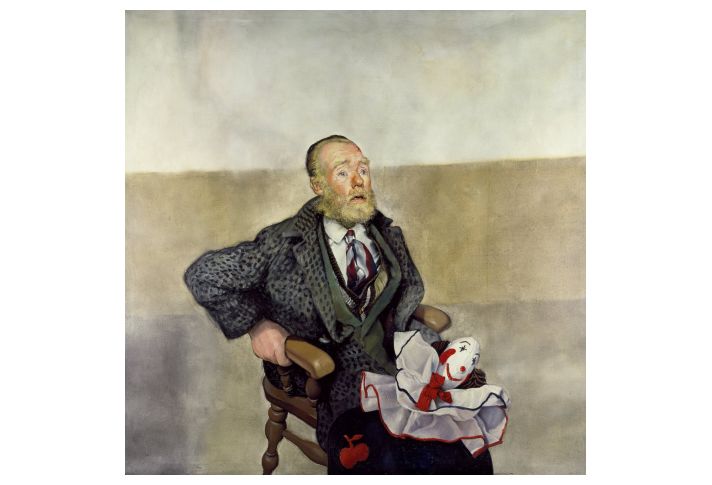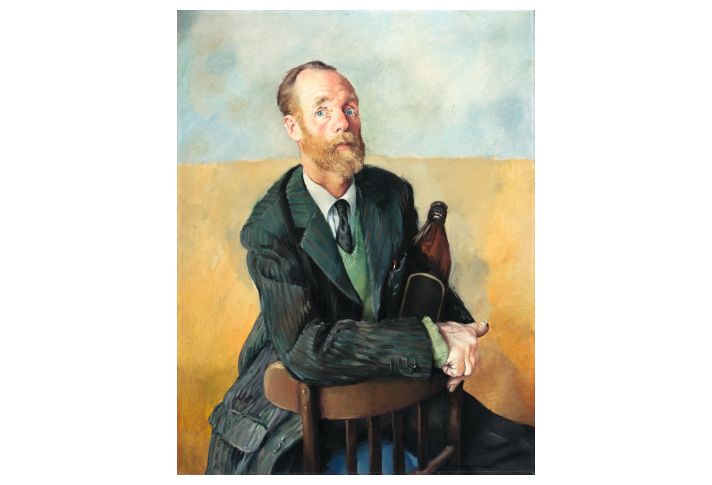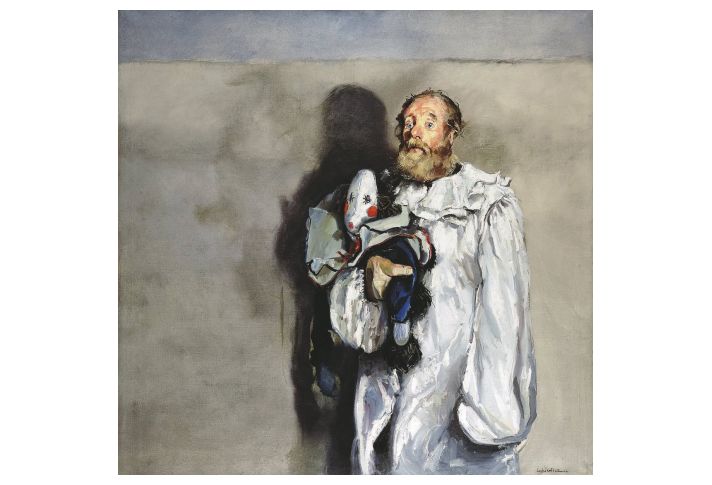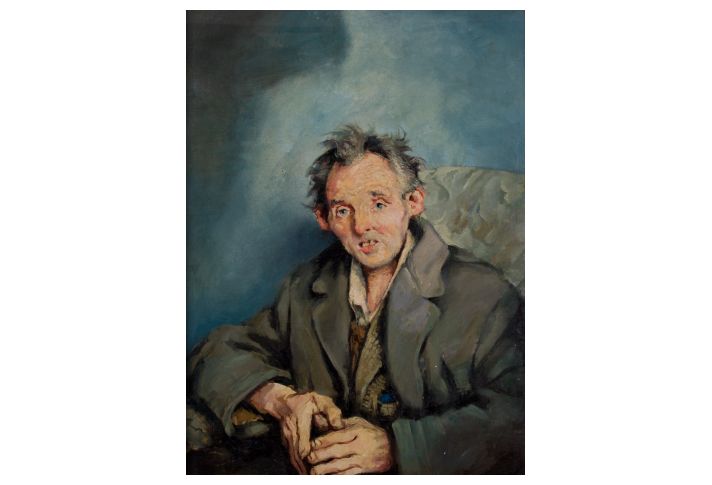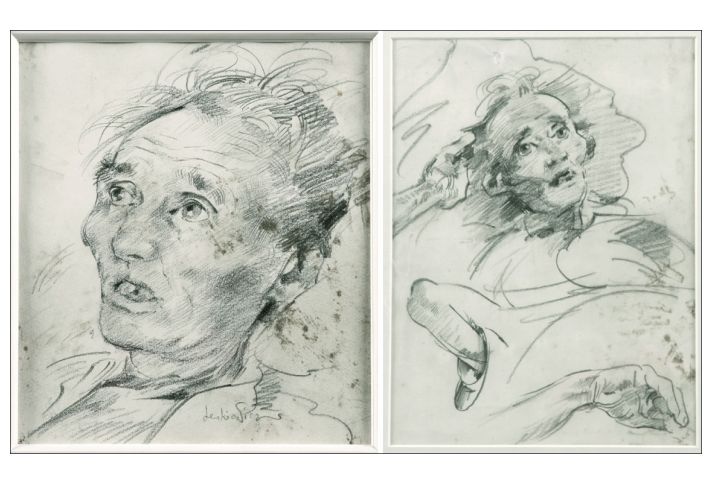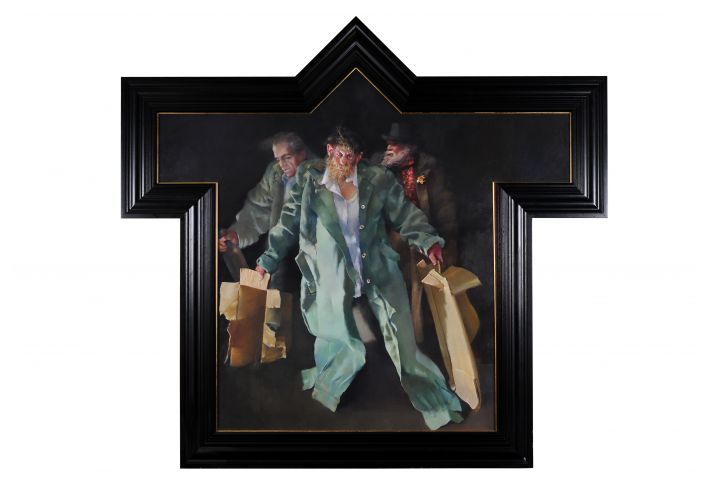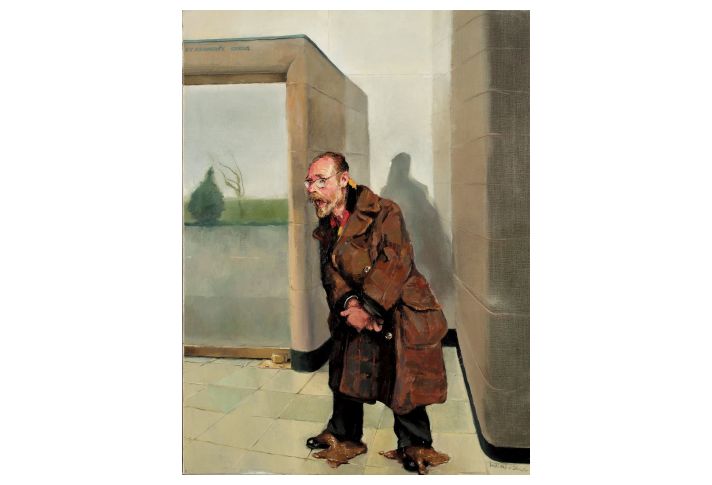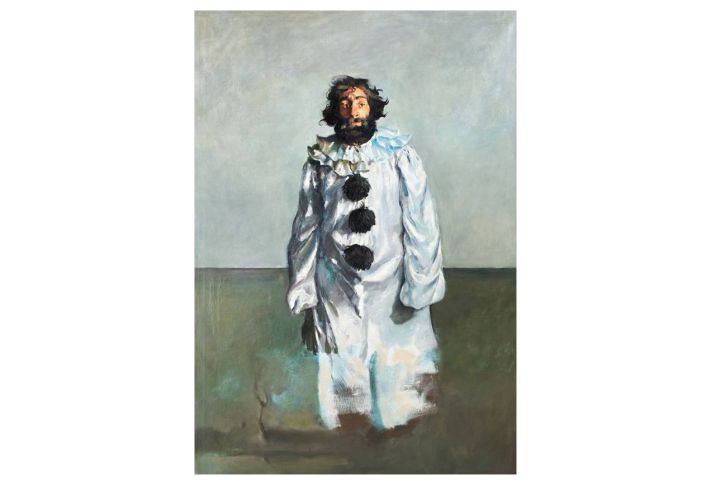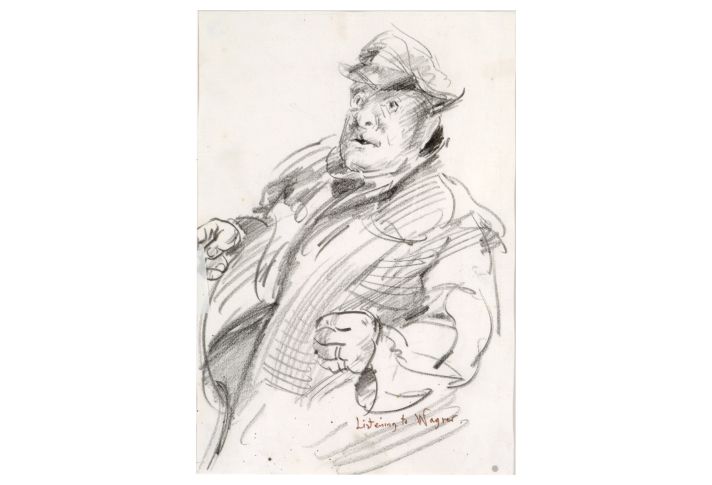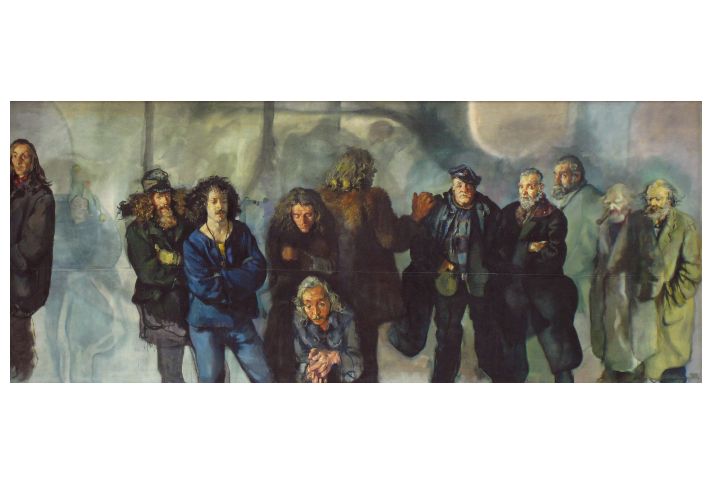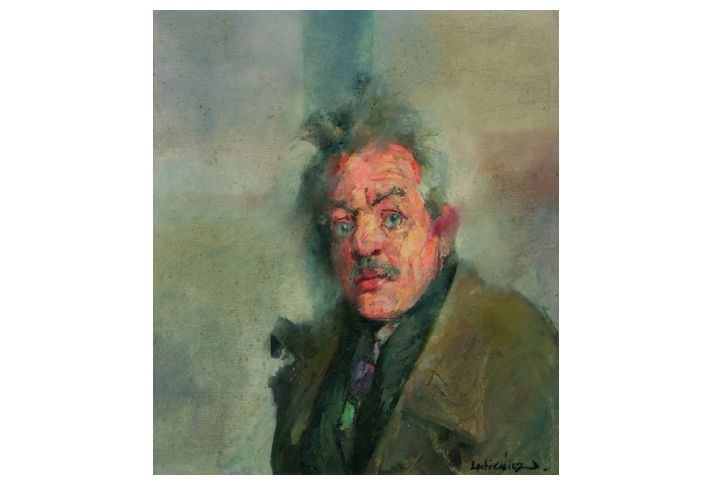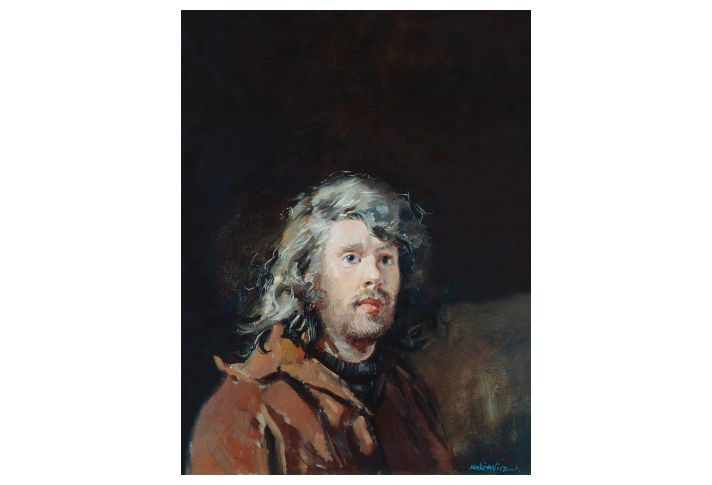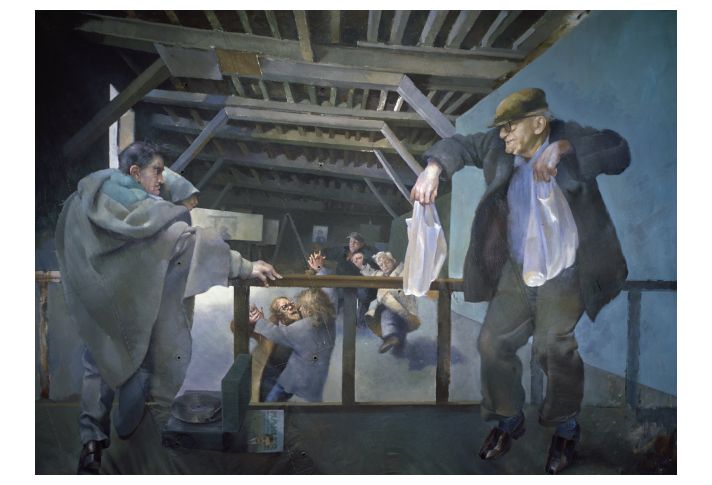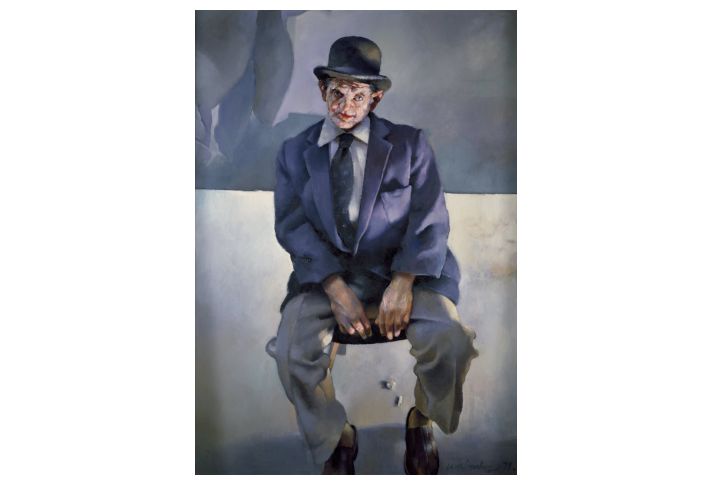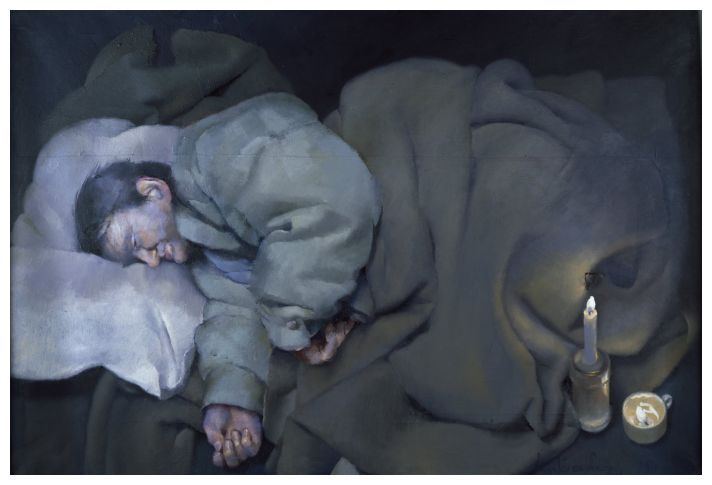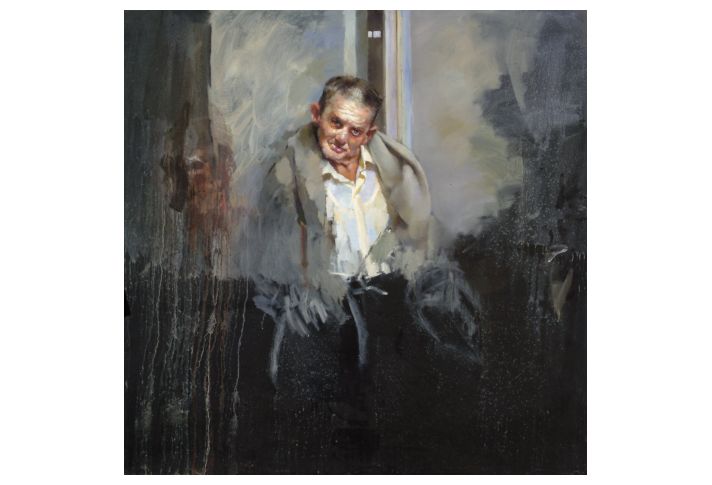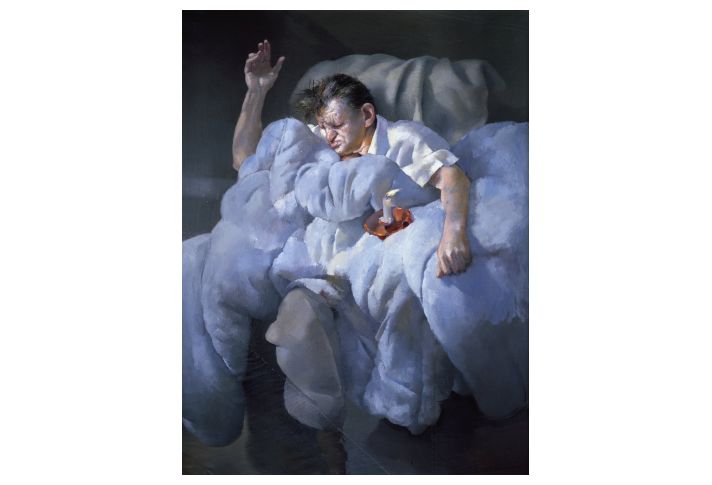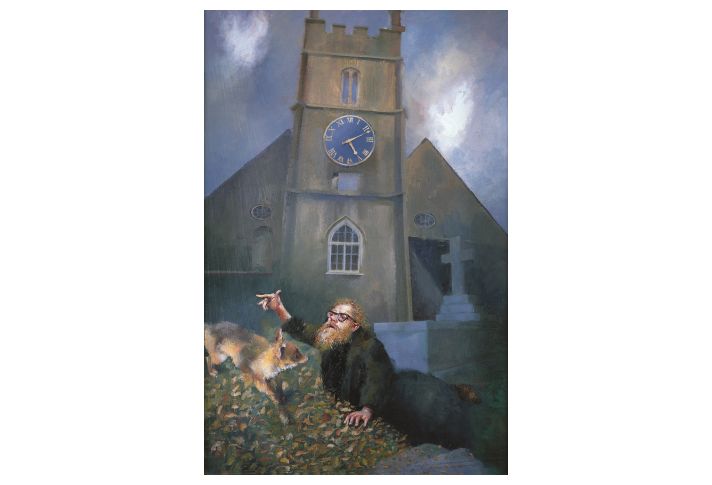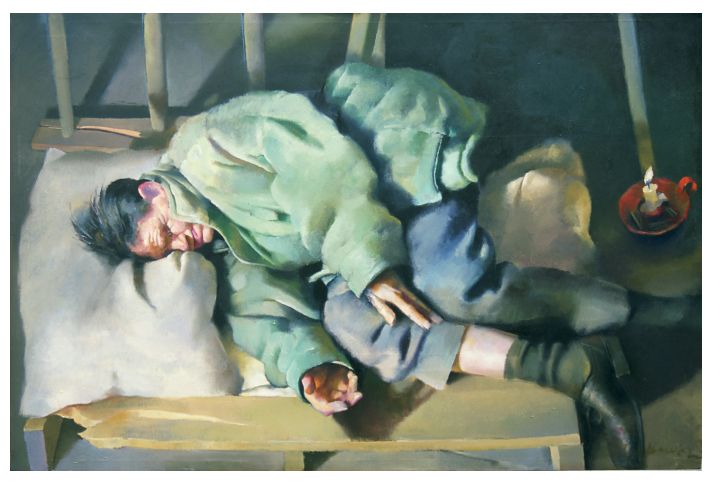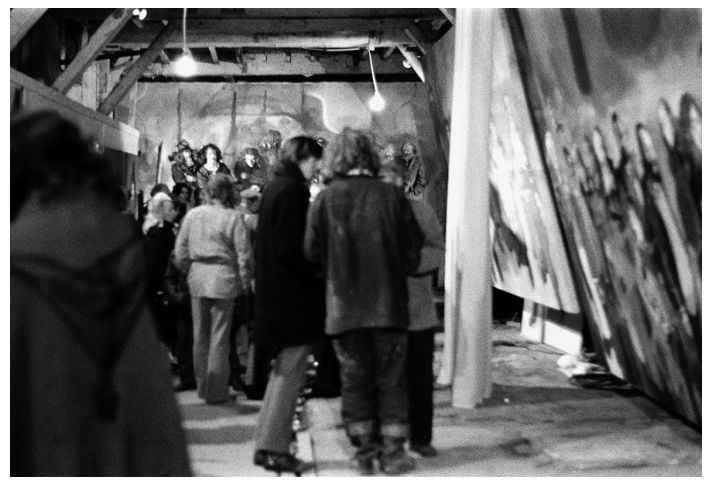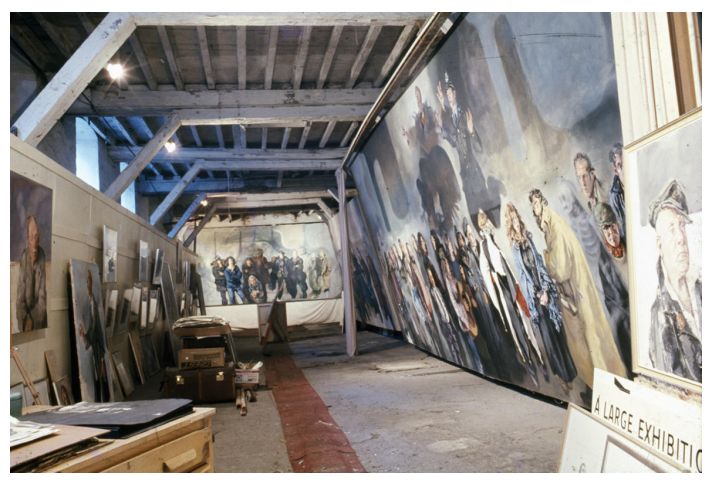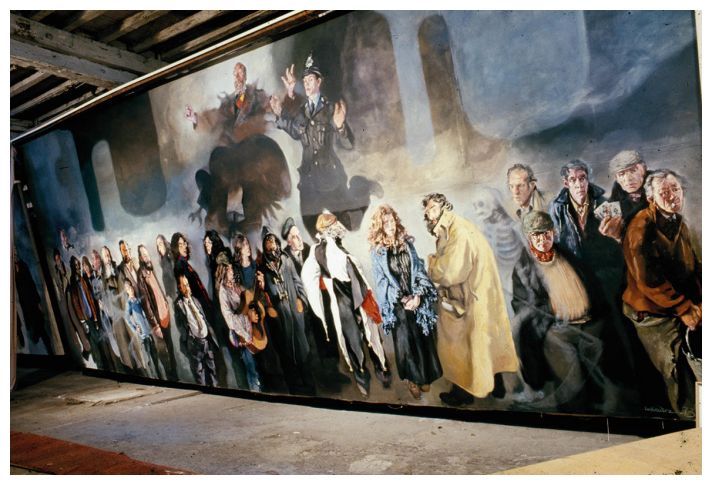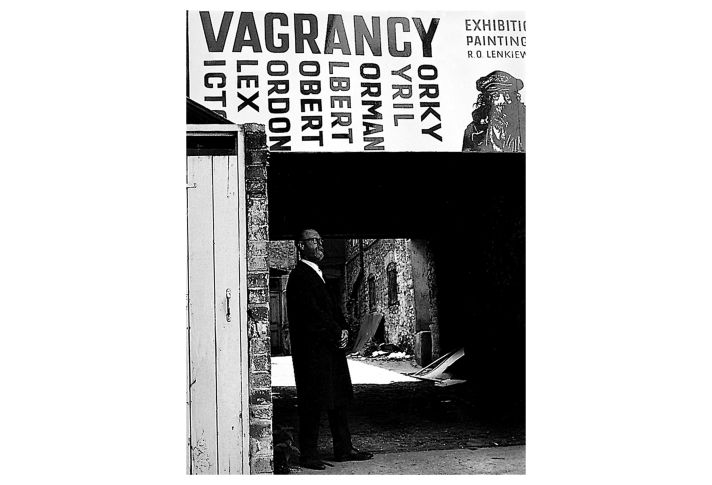Living cheek by jowl with the vagrants who had begun to doss down in Lenkiewicz's home put enormous strains on the artist’s families, but the Lenkiewicz’s Schweitzerian experiment was only just beginning. ‘The Cowboys’ Holiday Inns’ (an ironic reference to the popular hotel chain) was the name given to the derelict warehouses in Plymouth commandeered by Robert Lenkiewicz to house the growing numbers of vagrants attracted by his charity. At any given time, there might be up to ninety vagrants bedding down in about nine different properties.
It was to one of these ‘dosses’ – called ‘Jacob’s Ladder’ because entry could only be gained via a short ladder – that the great and the good of the Plymouth establishment were invited in March 1973 to view a large exhibition on the theme of Vagrancy. Three vast paintings dominated the space, including The Burial of John Kynance, homage to Courbet's painting A Burial at Ornans (1849-50). In Lenkiewicz's treatment the mourners Doc, Blue, Harmonica, Barney, Cockney Jim, Taff, Wee John, Diogenes and Cyril, are seen from the point of view of the corpse in his coffin whilst the skeletal personification of Death dances amongst them (sadly, this painting and many others were destroyed in a suspected arson attack in 2012). A new palette of close-toned colours – greys, greens and earthy browns – gave these paintings a reflective, elegiac quality. One of the tramps, Black Sam, remarked: "Fine stuff, fine stuff! But when I looks at the pictures o’ the lads, I feels like I’m in a mortuary."
Lenkiewicz was inspired by the example of the Italian social activist Danilo Dolci, who exposed the appalling poverty and political neglect in 1960s Sicilian society by recording the oral testimony of its citizens. So Lenkiewicz produced a booklet, Observations on Local Vagrancy, filled with the responses of the vagrants and those professionally involved in their management to a questionnaire on the nature of vagrancy. This approach – of publishing the observations of the sitters, perhaps giving them a public voice for the first time – would be used throughout the exhibitions which Lenkiewicz thought of as "sociological enquiries by visual means".
On the opening night, the vagrant Albert Fisher, known as 'Bishop', unveiled the centrepiece picture, The Apotheosis of Albert Fisher, in which the tramp is seen being escorted up to heaven by a local policeman. Lenkiewicz addressed the guests: "We are gathered here to share a confrontation between the authorities and those who consider themselves vagrant, or who are considered vagrant. That confrontation is designed to establish that there is a vagrancy problem in Plymouth. ... This week's count is 54 people [sleeping rough]." But Lenkiewicz had already been ignored by the local authorities, who scarely accepted that there was a vagrancy problem in Plymouth. In any case, Lenkiewicz believed that hardly any attention is paid to reasoned argument, so he had arranged a trademark visceral surprise for the local dignitaries attending the opening night.
The artist first informed his guests that "Unfortunately, for various reasons, many of the lads who have been 'skippering' have not been able to turn up. Many of the authorities have not turned up either." However, his plan was for the assembled vagrants, who were gathered out of sight of the guests, to flood into the room en masse at a pre-arranged signal. "This they proceeded to do, most of them drunk" said Lenkiewicz, "and, of course, they wrecked the whole evening."
But the clowns and fools, engaged in their chaotic Dance of Death, who peopled the Vagrancy pictures, had something to teach the more advantaged:
Death makes a fool of life’s joys or purposes, or at any rate appears to. In order to tolerate him he is dressed in the costume of his ambition. Dürer, Holbein and Beham have all recorded him in jester’s apparel. The symbol of the Fool relates to Death insofar as both survive inevitably, they have something innately in common. In one sense death is merely change, a rearrangement; similarly, the Fool, unable to stabilise his situation or mood, reflects the vacillatory undertone of chaos and order, life and death. Unlike the more self-conscious person, the Fool remains unperturbed by his own actions or those of others. (1973)
The pattern was set and Lenkiewicz would now embark on a sequence of exhibitions, shown in his own studios, that looked at "the business of living". These enquiries were termed The Relationship Series, later known as ‘Projects’, and would have one overriding theme: ‘Attitudes Towards Love’.
Lenkiewicz maintained his connection with the vagrants until the end of his life. Each Christmas Day, he and his associates would provide a seasonal dinner at Plymouth's bus station, with food donated by local restaurants and cafés.









